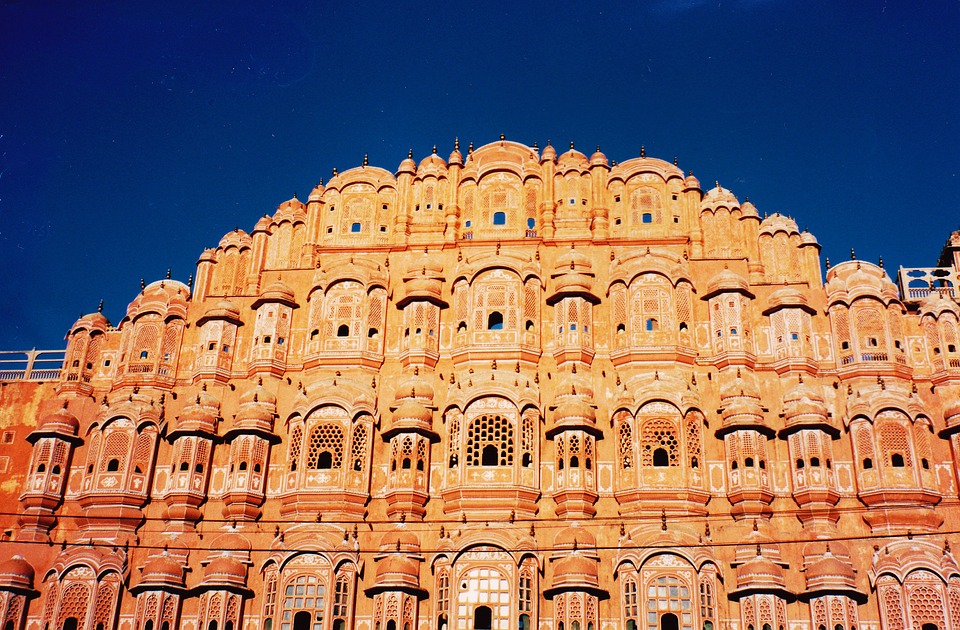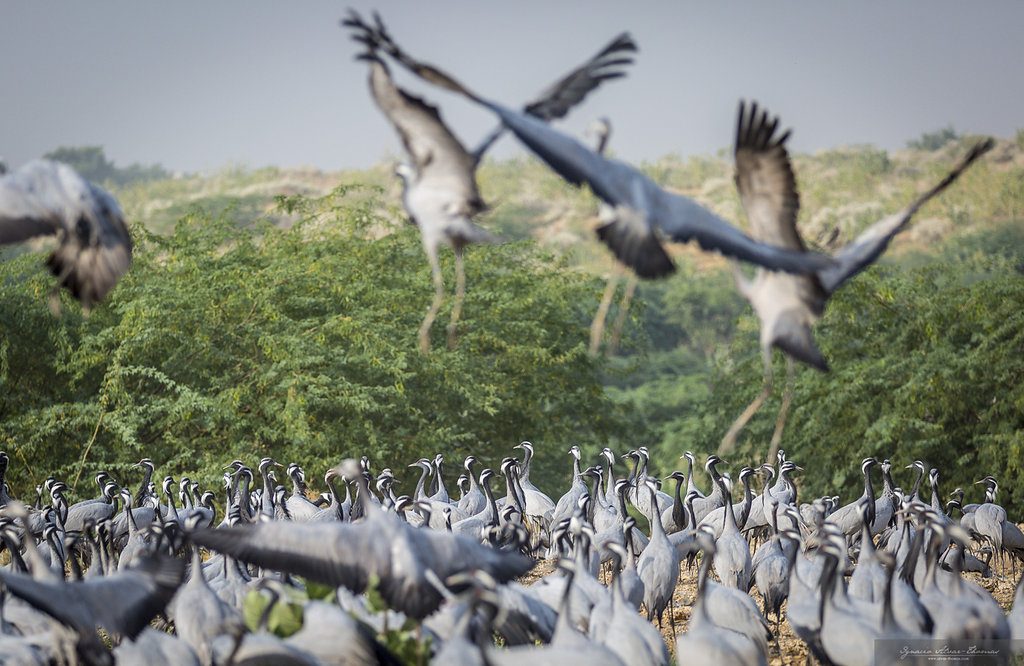This enthralling 2-week journey through Delhi-Agra Rajasthan will introduce you to dynamic cities, charming rural villages and time-honoured traditions.
Day 1: Arrival in Delhi
Upon arriving at the international airport of Delhi in the morning/afternoon, you well be greeted with a traditional welcome. Then, you will be taken to your pre-booked hotel for the night. Check in, take your first day off, and relax.
Accommodation: Stay at Colonel’s Retreat or Lutyens bungalow or similar.
Day 2: Delhi full day sightseeing
In the morning, our sightseeing begins. We will visit the walled city of Old Delhi, Chandni chowk where every street is buzzing with activity. The influence of the Mughals, who once ruled from the ramparts of the Red Fort, can be seen extensively.
First, we will visit Jama Masjid – the largest mosque in India, built in the 17th century. Later, we will drive past the New Delhi Area to visit Raj Ghat, India Gate, Rashtrapati Bhawan (Presidential Palace), the Parliament House, and other colonial buildings. The early 20th-century work of Edwin Lutyens, a British architect, prominently features in the colonial districts. Finally, visit the famous Qutub Minar and Humayun’s Tomb, a marvellous example of Persian-inspired Mughal architecture.
Meals: Breakfast.
Accommodation: Stay at Colonel’s Retreat or Lutyens bungalow or similar.
Day 3: Delhi to Jaipur via Abhaneri
Today, we leave for Jaipur – the colourful capital of Rajasthan known as the “Pink City”. En-route, we will visit the Abhaneri Chand Bavdi, the impressive yet one of the largest stepwells in India.
Chand Bavdi (stepwell) in the Abhaneri village is one of the oldest and most popular attractions in Rajasthan. It was built by King Chanda in 9th century AD. Chand Bavdi was built to conserve water and provide a respite from the intense heat. It was a community gathering place for locals as well as royals. The depth of the stepwell is 30 meters deep or this stepwell is equal to the depth of 13-story. Chand Bavdi is an architectural wonder with 3,500 perfectly symmetrical, narrow steps. it has a double step on all three sides. Remain on one side there is a multi-story palace based on pillars, these stairs are made of symmetrical, which gives a different feeling to stepwell view.
But the stepwell is not easy to find, making it one of India’s hidden wonders.
Meals: Breakfast.
Accommodation: Stay at 28th Kothi or Pearl palace or similar.
Day 4: Jaipur full day sightseeing
After breakfast, we drive to the ancient capital of Amer, 11 km from Jaipur. Famous for its grand Amber Fort, Amer was the ancient capital of Kachhawaha dynasty more than half a millennium. We then proceed to City Palace, a perfect blend of Rajasthani and Mughal architecture.
Next, we visit Jantar Mantar, an observatory built in the 18th century. Its solar devices can measure the day’s progression with an error of just 2-5 seconds, making it an astronomical treasure that can still accurately make predictions today. We will also visit Hawa Mahal (Palace of Winds), a five-storied facade made of pink sandstone. Built in the year 1799, Hawa Mahal and its discreet windows (Jharokhas) allowed royal ladies to watch street processions and festivities. (Other places to visit Gatore Ki Chatris, Birla Mandir, early morning Govind dev ji ki Arti, morning flower and vegetable market).
Meals: Breakfast.
Accommodation: Stay at 28th Kothi or Pearl palace or similar.
Day 5: Jaipur to Jodhpur- HACRA Dhani
Today the early morning wake-up to catch a train to Jodhpur this day train (5hours trip) gives you an experience of Indian rail journey as well as window view of desert countryside landscape. On arrival at Jodhpur, you will be picked up by your private driver to take you for breakfast/early lunch and then drive 85km north-west of Jodhpur to reach HACRA Dhani for your two nights traditional desert living experience.
Meals: Breakfast, Dinner.
Accommodation: Stay at HACRA Dhani huts home or similar.
Day 6: HACRA Dhani
If you’re seeking “the real India,” look no further than the tiny hamlet of HACRA Dhani and Gemar Singh. Nestled in the scrubby fringes of the Thar “Living” Desert of Rajasthan, true experience of desert life. Gemar’s home provides a window to rural Indian life usually inaccessible to Westerners. Traditional “Jhumpa” huts for his guests, wonderful vegetarian meals prepared by his family, contacts with locals, guided activity (local community & desert nature walk) — all without compromising the essence of the culture as so often happens when tourism distorts a local experience. Gemar cares about his guests and his community.
I should make it clear that HACRA Dhani is not a luxurious place to stay. The huts and beds are very comfortable, and there is a bathroom block for guests, but HACRA Dhani does not have 24hrs running water and electricity. Like many villages in rural Rajasthan access to water and electricity are still a challenge. Water is pumped from deep underground. The pumps have to reach deeper every single year due to years of poor monsoon and water poverty in many parts of India. This is particularly the case in Rajasthan's desert areas.
Desert nature & wildlife at your doorstep: blue bull (Nilgai). They’re Asia’s largest antelope that appear to be half cow half horse. The females are a fawn brown colour while the males have a distinctive navy-blue hue. Extremely skittish, it’s best to admire from a distance. There’s also Chinkaras—the beautiful Indian Gazelles—who wandered gracefully in small groups. Those interested in birds will also find themselves with plenty of choice, including the colourful parakeets, green bee-eater, purple sunbird, bul-bul, great grey shrike and peacocks.
Meals: Breakfast, Lunch, Dinner.
Accommodation: Stay at HACRA Dhani huts home or similar.
Day 7: HACRA Dhani to Jaisalmer via Kheechan
This today’s road journey will take you to Kheechan (70km from HACRA Dhani) a place of migratory cranes birds (numbers of thousands of birds can be seen near the water body) and drive further to Jaisalmer reaching early afternoon. Jaisalmer probably tops the list for traveller’s as one of the most visited cities in Rajasthan! Also known as the golden city where everything looks like it’s been dipped in honey!.
You’ll feel like you’ve gone back in time to an ancient kingdom and wander around a real-life giant golden sandcastle. All the sights, colours, culture and the mystery of the desert will make you fall head over heels in love with it.
Meals: Breakfast.
Accommodation: Stay at The Gulaal or 1st Gate or similar.
Day 8: Jaisalmer sightseeing and desert camp
First up head on over to the Jaisalmer fort and have a look around the markets and beautiful viewpoints and cafés that look over the whole city.
Visit the Fort palace museum to see some of the apartments of kings and queens and Jain temples.
Then head on down to the Patwa Havelis to see some beautiful stone carving work and end the afternoon at Gadisar Lake.
Visit to Jaisalmer is incomplete without visiting a sand dune for sunset and take a camel ride with overnight camp – it’s an experience that cannot be missed!
Other places to visit including Bada Bagh, this is a viewpoint with golden cenotaphs of royal family to remember Rajasthan’s royalty! And Kuldhara an abandoned village in desert some even call the ghost village!
Meals: Breakfast, Dinner.
Accommodation: Stay at Desert Tents (Glamping like tent).
Day 9: Jaisalmer to Jodhpur
In the morning we depart by road for Jodhpur, the second largest city in Rajasthan after Jaipur. Known as ‘The Blue City’, Jodhpur is remarkable for its blue houses, which deflects heat and deters mosquitoes. After check-in and a break/rest, afternoon walk through clock tower bazar and old city streets to explore the real Indian city life and traditional markets/business, sweets, lassi, bangle making and silver market.
Meals: Breakfast.
Accommodation: Stay at Pal haveli or Haveli Inn Pal or KP heritage or similar.
Day 10: Jodhpur full day sightseeing
In the morning, visit Mehrangarh Fort (Majestic Fort), an architectural marvel spanning 5km that includes a splendid palace with intricately carved latticed windows. An imposing structure perching on a hill that overlooks Jodhpur, the fort is over 500 years old and serves as a reminder of past royal splendour.
Afterward, we will also visit Jaswant Thada, a cluster of royal cenotaphs in white marble in memory of Maharaja Jaswant Singh II.
Meals: Breakfast.
Accommodation: Stay at Pal haveli or Haveli Inn Pal or KP heritage or similar.
Day 11: Jodhpur to Narlai/Jawai
Your Jodhpur to Narlai/Jawai drive takes 3 hours’ time, along the way, we stop to visit a small country workshop of traditional artisans’ pottery making, durry weaving and block printing. Continuing our drive to have quick stop at special local shrine of Om Bana, we finally arrive in the beautiful rocky countryside of Jawai for a scenic stay. Afternoon take a game drive (leopard safari) in the open jeep for leopards and country life specially the Rabari community.
Meals: Breakfast, Lunch, Dinner.
Accommodation: Stay at Jawai Tent camp or boutique farm stay or similar.
Day 12: Jawai to Udaipur via Ranakpur
Today, our journey to Udaipur via Ranakpur Jain temple. Visit Ranakpur Jain temple a small town situated in the hills of Pali district home to one of the most important Jain temple complexes. Chaumukha temple (the four-faced temple) built on 1,4,44 marble stone pillars dedicated to the first Tirthankara Adinatha Ji, is the main temple of the complex. The temple was built during the reign of Rana Kumbha, a 15th-century Rajput monarch. Until this very day, Ranakpur remains one of the five essential pilgrimage sites for Jains.
Continuing our drive, we finally arrive in the beautiful city Udaipur surrounded by hills, palaces, and lakes.
Meals: Breakfast.
Accommodation: Stay at The Neem tree or Jagat Niwas palace or similar hotel.
Day 13: Udaipur full day sightseeing
We start the day off by visiting the City Palace – a fascinating complex of buildings built by various Maharanas (Warrior Kings) after Udai Singh, completed in the year 1725. We enter through the entrance at the northern Tripolia Gate into the central courtyard, the perfect spot to view filigreed balconies and ornate cupola-topped towers. We also visit Jagdish temple, built in the year 1651 by Maharana Jagat Singh. It is the largest and most splendid temple of Udaipur.
In the afternoon, we continue on to Sahelion Ki Bari (Garden of Maids of Honour), an ornamental garden built by Maharana Sangram Singh for his daughter and the ladies of the Queen’s court. Stroll through the several foundations, pools, and chiselled pavilions. At sunset, you have the option of going on a boat ride at tranquil Lake Pichola.
Meals: Breakfast.
Accommodation: Stay at The Neem tree or Jagat Niwas palace or similar hotel.
Day 14: Udaipur
A relaxing day with cooking class or take your time for sort guided hike through suburb of Udaipur and its Monsoon palace, hidden lake this hike will give you an overview of local flora and fauna in Aravalli hills, tribal living and small farms OR Take a day trip to Chittorgarh fort.
Meals: Breakfast, Lunch.
Accommodation: Stay at The Neem tree or Jagat Niwas palace or similar hotel.
Day 15: Departure from Udaipur to Delhi/Mumbai
After breakfast, transfer to airport to fly back to Delhi/Mumbai.
Having discovered Delhi, Agra, Jaipur and more Rajasthan’s cities in this once-in-a-lifetime experience.
Meals: Breakfast.
Other Plans
If you prefer to choose your own travel destinations in India, with your own holiday duration and your preferred activities. Contact Us to organise a Tailor Made Trip of Rajasthan for your family and friends!!.
Contact Us Now
 The Golden Triangle & Beyonds
The Golden Triangle & Beyonds
















Thank you for all the kindness, good food and a lot of stories that give more insight and understanding of life and history in India. We love the quietness and peace if the desert an unforgettable experience.